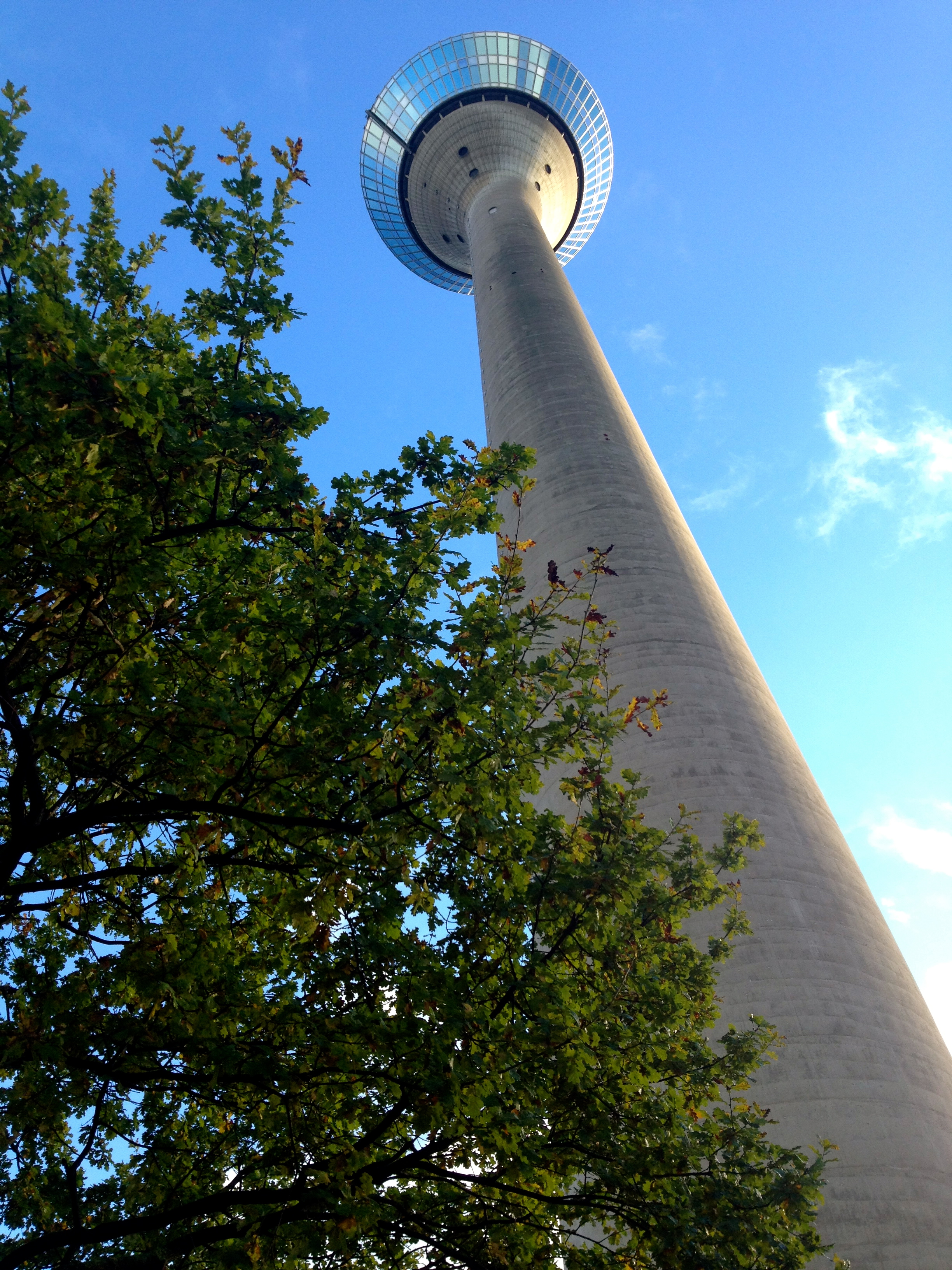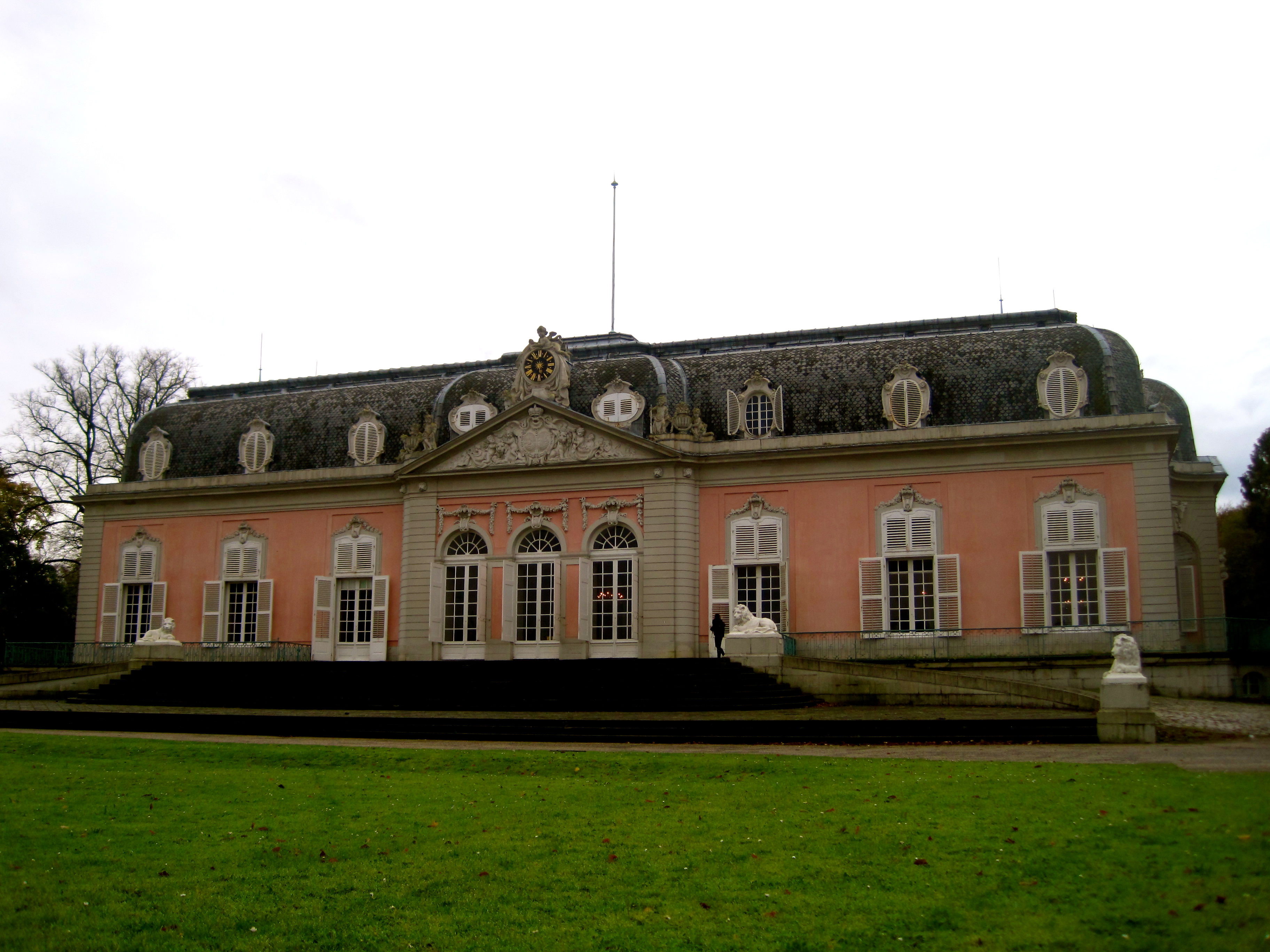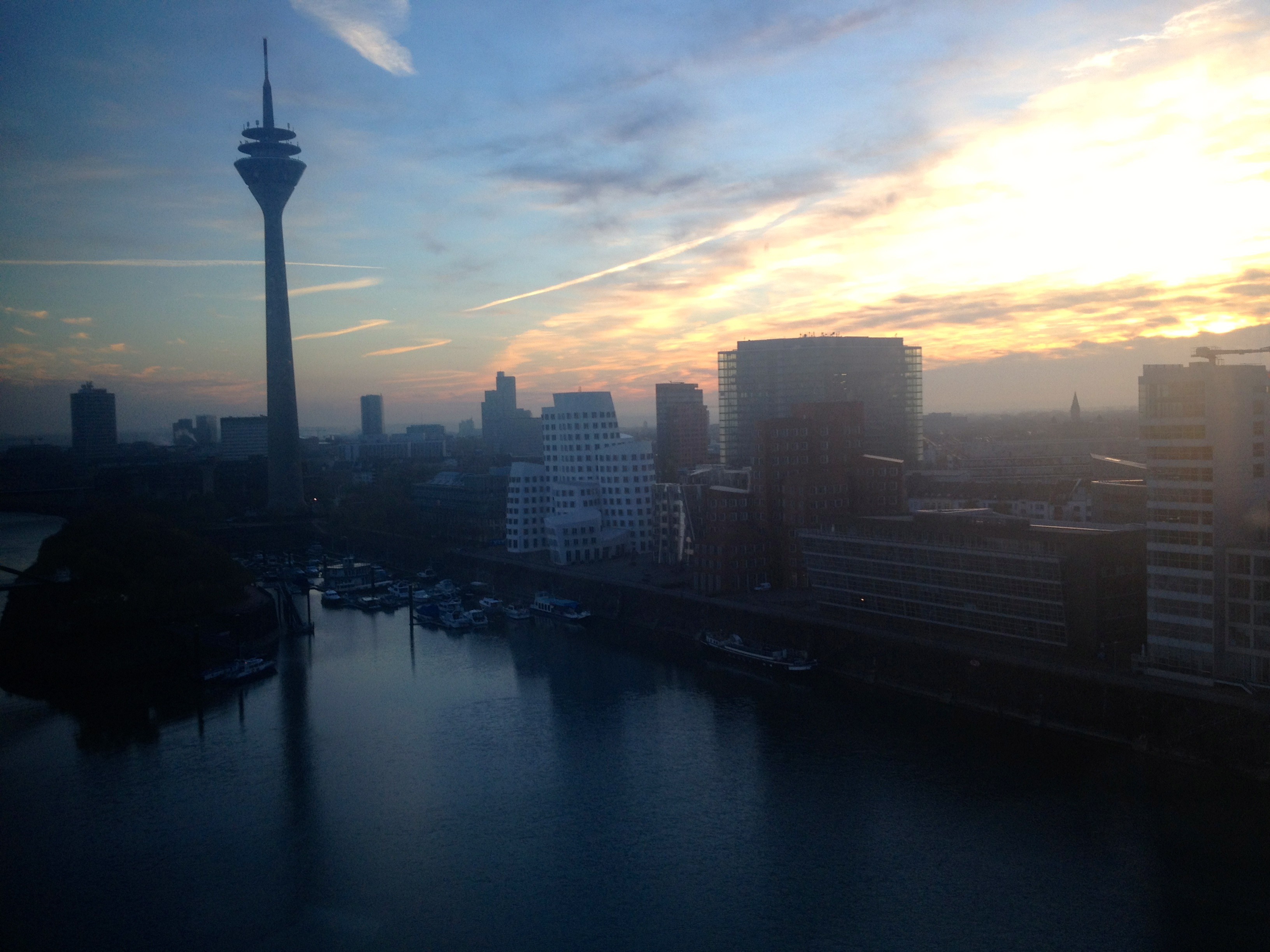The buildings before me appear to be dancing to the beat of their own song, much like the city that contains their movement. Serving as the state capital of North Rhine-Westphalia, Düsseldorf had no definition for me. We were strangers until I danced with the city’s Gehry buildings. The work of American Frank O. Gehry, the three waving complexes make up the center for arts and media in Düsseldorf. Each piece bears its own identity, shape and color. They set Düsseldorf apart from other German cities. They define a city with no preconceived definitions for visitors like me.
The Gehry Buildings reside in Düsseldorf’s MedienHafen, otherwise the Media Harbor section of the city. This corner of Düsseldorf bears no semblance to fanaticized images of Germany with lederhosen and quiet cobbled alleyways. Rather it has become a center for creative architecture. Several international architects have played a role in reconstructing this old Rhine port area, including Claude Vasconi, Steven Holl and Joe Coenen. Empty warehouses now house television channels, radio stations and ad agencies, gifting the area with its media defined name.
My guide Renata keeps driving home the point about this section of Düsseldorf. “Everything is like a ship.” Düsseldorf might be trying to find definition by creating something new and different in the old, but as Renata enforces, even the MedienHafen can’t escape what it once was. The old port area lurks behind new buildings shaped like ships, almost defining itself in a past memory.
The Media Harbor section of Düsseldorf leads along the Rhine. In the early evening hours, the Rhine Promenade bathes in a gentle light. Past bars and restaurants, I find myself staring up at the Rhine Tower.
Measuring 240 meters from the very bottom to the tip-top, the tower is certainly not Düsseldorf’s prettiest puzzle piece. However it is all a part of Düsseldorf’s definition. I climb up to the Panorama deck, 168 meters above the city and the Rhine.
Some daredevils lie flat on the observation glass for the ultimate act of Düsseldorf’s trust. The hope is that the Rhein Turm will hold up and not drop you, but I don’t put my trust in a city so easily. I observe others appreciating the views of the city and the river, mostly over a cold beer.
The swaying sensation is hard to shake once I come back down from Düsseldorf’s best view. I seek out the Altstadt perhaps to cure the vertigo. Düsseldorf’s old town is an appropriate area to calm nerves as it is home to the longest bar in the world. While not just one bar, the saying comes from the over 260 bars, pubs and restaurants standing side by side in the area.
Spilling out into the streets, I notice everyone has tiny quarter liter glasses of dark frothy beer in their hands. The favorite beer of Rhinelanders and those in Düsseldorf is easily Altbier. In fact it is the only type of beer you can order at the five microbreweries in town. Simply called “Alt”, the dark, top-fermented beer upholds the old Purity Laws dating back to 1516 with an emphasis on keeping the focus on natural ingredients. I slug back an Alt at Zum Schlüssel, one of the oldest breweries in the city from 1850. Again Düsseldorf defines itself. In a world of microbreweries and innumerable types of brews to sample, this city only has one. What that says about Düsseldorf can only be understood while sipping on the dark brew.
And at the same time, Altbier isn’t the only liquid of the city. Killepitsch liquor also hails from Düsseldorf. While some say the liquor composed of herbs and 40% alcohol acts in a medicinal fashion, others explain Killepitsch as a fine compliment to a hearty meal. I pop my head in the window of Et Kabüffke. The establishment serves Killepitsch through this tiny window. With one taste, the thick liquid sends quivers throughout my body as it burns down my throat. While I question the medicinal explanation for Killepitsch’s existence, the sip is another defining Düsseldorf moment, a burning indication that this city can be just as strong as the others.
With a bit of a Killepitsch hangover, I make my way to Schloss Benrath the next morning. Built as a pleasure and hunting palace for Elector Carl Theodor, the bubble gum pink structure sits on 60 hectares of parkland for the public’s use. The main building is a bit of an empty shell. Most of the furniture and its contents were lost, but that doesn’t mean Schloss Benrath can’t tell a good tale. As my guide explains how Carl Theodor used each room, she drops the ultimate bomb at the end of the tour. Carl never even spent the night in his palace. It merely acted as a symbol of his power and wealth.
While it seems so wasteful to build a palace and never use it, that is just one of Düsseldorf’s defining tales. From my window at the Hyatt Regency, I attempt to define my Düsseldorf experience. The morning light begins to wake up the Rhine Tower and the rest of the city. It is a clarifying light, reminding me that just as the sunrises each day, Düsseldorf will continue to define itself for strangers like me.
Have you been to Düsseldorf?
My visit to Düsseldorf was made possible by airberlin and Düsseldorf Tourismus.











Nice! I went to Düsseldorf years ago solely because of the Regina Spektor song. Found it slightly boring, though, so maybe I’ll have to give it another go!
Cool photos Suzy. I especially like the one from beneath the tower. I’ve been to Germany a few times, but have never made it to Düsseldorf, mostly I guess because I didn’t know anything about it. But it sounds like there is lots to see!
Another very interesting review. Dusseldorf is not somewhere I’ve been to yet, it certainly looks tempting especially for the local brews.
I’ve made it to Berlin and often go with work to Hamburg which I absolutely adore.
I love the Gehry buildings! And the Rhine Promenade looks like it would be a great place for people-watching!
I haven’t been to Dusseldorf yet; in Germany as in so many other countries, I obviously have a lot more to see!
This looks like a pretty fun place for anyone who loves architecture (me!). And beer of course. I do not, however, envy you that killepitsch hangover — sounds similar to mallort in Chicago, an herb-y alcohol that you still feel for hours the morning after.
I’ve never considered Düsseldorf to be a somewhat cool travel destination, I only knew it for the airport and some great art museums… but you’re post intrigued me to go more consciously next time! Wonderful pictures!
Great, thanks!! Düsseldorf is my home town 🙂 Will be there in december…
Sone of those buildings look really interesting! Now that I’m living in Germany, I really want to see more of the country so hopefully I’ll make it there soon.
I visited Germany last year but I missed Düsseldorf but sharing these pictures you have made me realised that I did a blunder.
I love how the Düsseldorf’s Gehry Buildings look like. The Dancing House from Prague (which is also a Frank Gehry building) looks quite similar.